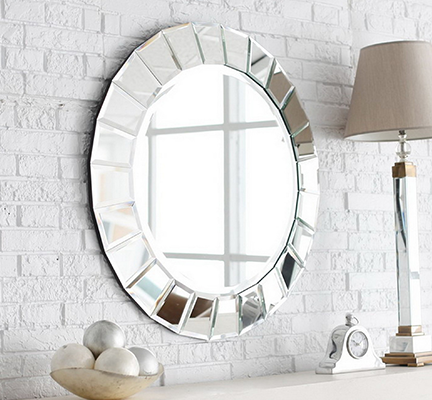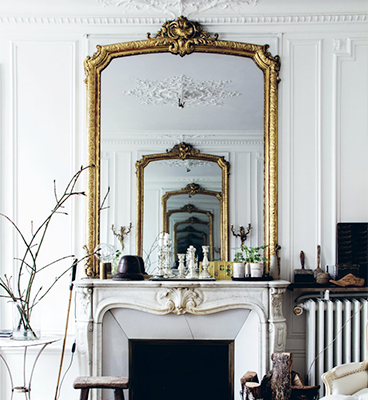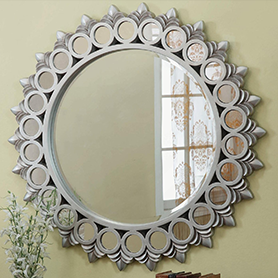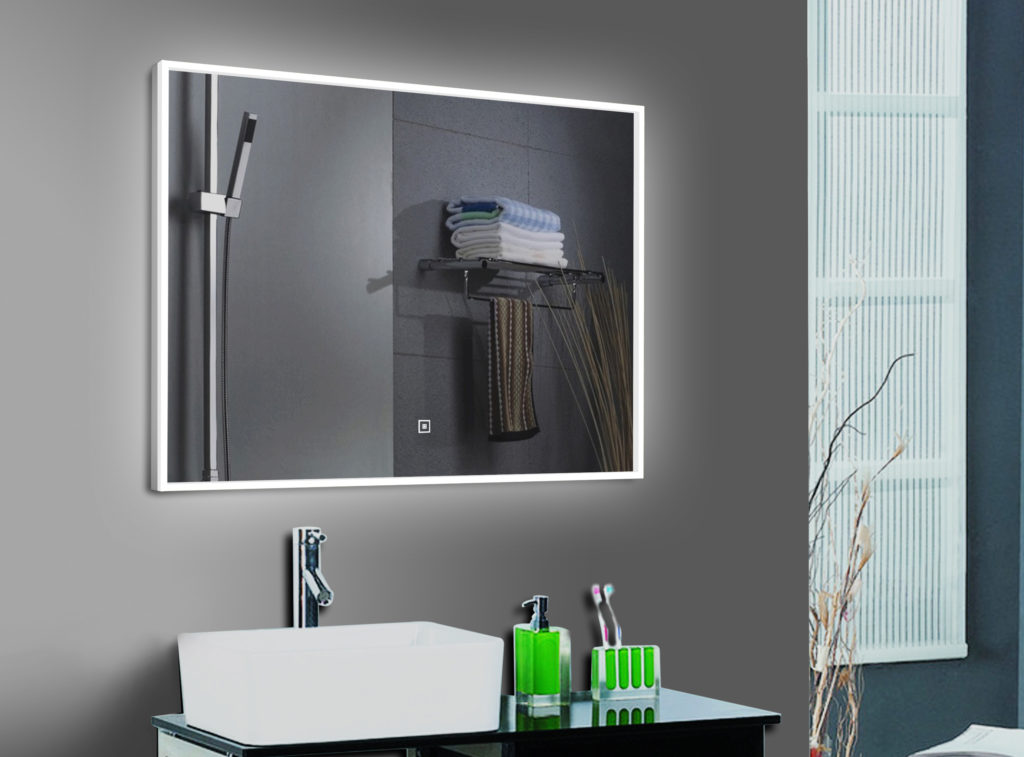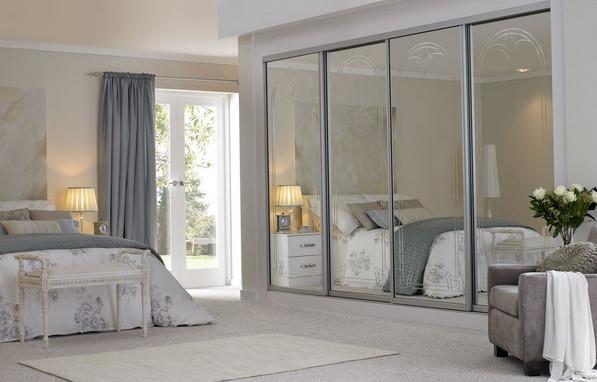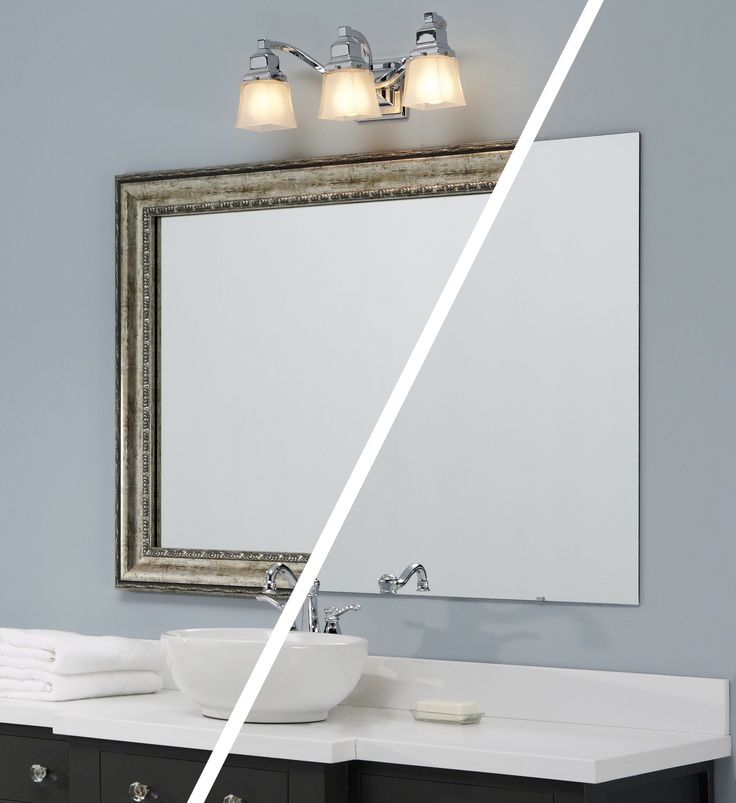You peer into one virtually every day.
But we will fathom an educated guess you haven’t a clue how the basic household mirror was invented.
Or have you?
Mirror, mirror on my wall, how did you become the fairest mis-representor of us all?
The common household mirror, however ornate or plainly framed, is oft’ referred to as a reflection of our ‘truest selves’. But actually, it’s a reverse representation of the universe we occupy. Think me wrong? Hold up anything with writing into its reflective surface and then try and read it. No, the world as depicted in a mirror is an alternative truth. Left is right. Right is left, even as all appears right within its parameters; merely an impression of what is actually seen on this side of the ‘looking glass.’
Mirrors have long since been incorporated to add either classic elegance or contemporary flair to a living space. By the very illusion of their surface appeal they add a sense of artificial depth to most any room. But their manufacturing has changed considerably, even if essentially the process of ‘making a mirror’ has not. All mirrors today are made by applying a reflective coating to a layer of glass. What you may not know is that the reflective coating is not on the front; rather, the back of the mirror where it can remain relatively protected from corrosion or other accidental damage; a far cry from the days when mirrors were made entirely of solid bronze and/or silver; hence, far too expensive for widespread use among we commoners. And yet, because of their low reflectivity, these polished precursors gave very dark reflections indeed and were largely unsuitable for indoor use, even by candlelight or lanterns.
In ye olden times, glass became the desirable material to fashion a mirror because of its naturally smooth, scratch-resistant surface and ability to reproduces reflections with virtually zero blur. The metal-coated glass mirrors we all take for granted today was likely invented in Sidon (modern-day Lebanon) in the first century AD by coating blown glass with molten lead.
Problem: these mirrors were small and fragile. Not good.
Fast track eleven centuries later and the Moors were creating clear glass mirrors in Spain; the Chinese, by coating metallic objects with silver-mercury amalgams, heated until the mercury had boiled away, leaving only the silver behind.
Problem: no uniform thickness and a queer green tinting from the glass’ natural iron content.
So, onto France where glass blowing and spinning was fast becoming a finite art, still unable to achieve uniform thickness, but with a method slowly developing. That brings us to the mid-nineteenth century; still too costly and fragile to be mass-produced. Then, along came the Germans and the Venetians in the sixteenth century.
While the invention of silvered-glass mirrors owes its credit to German chemist, Justus von Liebig in 1835, we sincerely doff our caps to the Venetians of the 16th century for coming up with the idea of the classic ‘glass’ mirror on the isle of Murano, dipping the back surface into mercury to obtain a near-perfect reflecting surface. Flash forward a hundred years, and those same Venetian mirrors had come to adorn palaces all over Europe. Eventually, the secrets of their process were learned (okay, stolen) via industrial espionage in London, Paris and elsewhere.
This made mirrors affordable. Unfortunately, their mercury-based technology also meant they were still highly toxic. Today, the most common household mirror still uses glass as its template, but now with either silver or aluminum as its base, repeatedly coated in tin chloride as its bonding agent because silver will not stick to glass. Activators cause the tin/silver to harden. Then copper is applied to ensure long-term durability with a special paint added to the back to protect the coating from scratches.
There are many types of aluminum glass mirrors. Each represents a different manufacturing process. Aluminum glass mirrors are made of float glass, manufactured using vacuum coating. Aluminum powder is evaporated (a process known as ‘sputtering’) onto the exposed surface of the glass in a vacuum chamber before being coated with two additional layers of waterproof protective paint. By contrast, low aluminum glass mirrors are crafted by silver coating the glass and then applying two more layers of protective paint onto its back surface: the net result, a very clear, light transmitting, smooth surface that accurately reflects natural colors.
Different still, safety glass mirrors; created by affixing a special protective film to the back surface of a silver glass mirror, thus preventing injury in case the mirror is broken. This type of mirror is used for furniture, doors, glass walls, commercial shelves and other public areas. Then, there are silkscreen printed glass mirrors, fashioned using inorganic color ink to print patterns through a special screen onto glass. Various colors, patterns, and glass shapes are available; durable, moisture resistant and widely used for decorative purposes (e.g., on mirrors, table tops, doors, windows, kitchen chop boards, etc.). Last, but certainly not least, we arrive at the silver glass mirror. If nothing else, you probably own at least five of these right now; coated on the back to produce high quality reflected images.
We’re spoiled, aren’t we? All this history just so we can see ourselves in the living room, bedroom or bathroom; carrying a pocket-sized one in our wallets or purses, look into a rearview for traffic, or simply take a peek now and then to casually freshen up, ensure some grave fashion faux pas has been cleverly – if narrowly – averted by equally as clever camouflage; makeup and some other basic human hygiene.
The mirror: life before it must have been a snore. Think about it. We know ourselves by what we see, and our eyes before the mirror never saw us for who we truly are. Then again, how do the visualized impressions gleaned in a mirrored surface today help to legitimize that very essence of our souls? …hmmm.

